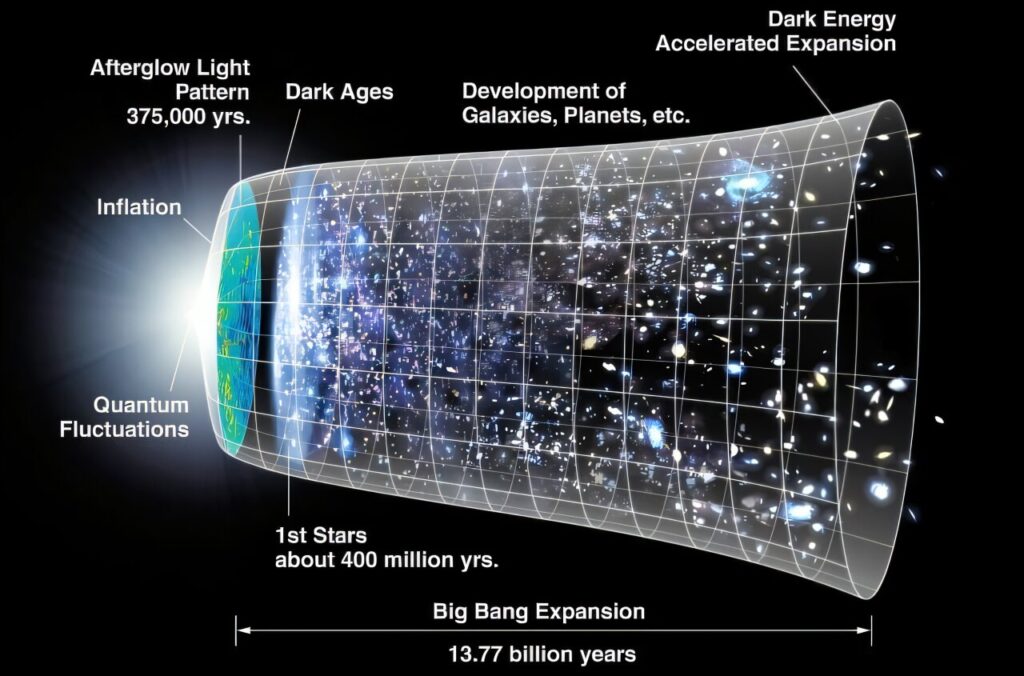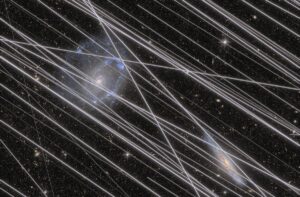
How exactly did the universe start, and what processes determined its formation and evolution? This is the question a groundbreaking study published in Physical Review Research seeks to address. A team of researchers from Spain and Italy has proposed a new model that could potentially challenge longstanding theories about the universe’s origins.
The study, which uses a series of computer models, questions the well-accepted theory that the universe began with a rapid expansion known as “inflation.” Scientists have long estimated that this inflation occurred within the first fraction of a second of the universe’s existence. However, the inflation theory requires several variables to align perfectly, making it a complex and speculative model.
Gravitational Waves: A New Perspective
In contrast to the inflation model, the new theory suggests that gravitational waves—a phenomenon predicted by general relativity—are responsible for the universe’s formation. This approach is rooted in a mathematical model known as De Sitter space, named after Dutch mathematician Willem De Sitter, who collaborated with Albert Einstein on the universe’s structure in the 1920s.
Dr. Raúl Jiménez, a co-author of the study and a researcher in experimental sciences and mathematics at ICREA in Spain, expressed excitement about the new model. “For decades, we have tried to understand the early moments of the universe using models based on elements we have never observed,” he said. “What makes this proposal exciting is its simplicity and verifiability. We are not adding speculative elements but rather demonstrating that gravity and quantum mechanics may be sufficient to explain how the structure of the cosmos came into being.”
A Historical Context of Gravitational Waves
First proposed by Oliver Heaviside and Henri Poincaré in the late 19th and early 20th centuries, gravitational waves gained significant attention in 1916 when Einstein described them as ripples in the space-time continuum. Despite being generated by various cosmic events, such as supernovae, black holes, and neutron stars, gravitational waves are notoriously difficult to detect. This challenge was overcome in September 2015 when the Laser Interferometer Gravitational-Wave Observatory (LIGO) successfully detected them for the first time.
“The cosmos is within us. We are made of star stuff. We are a way for the universe to know itself.” — Carl Sagan
Implications and Future Exploration
The origin of the universe remains one of science’s greatest mysteries, with the Big Bang theory long considered the catalyst for the universe’s creation. Despite numerous scientific breakthroughs, the exact conditions before the Big Bang remain elusive. The new model proposed by the researchers offers a fresh perspective, suggesting that understanding gravitational waves could unlock further insights into the universe’s earliest moments.
As the scientific community continues to explore the universe’s origins, this study represents a significant step forward. By focusing on gravitational waves and their potential role in the universe’s formation, researchers may be able to simplify and verify theories that have long been shrouded in complexity.
More information can be found in the study by Daniele Bertacca et al., titled “Inflation without an inflaton,” published in Physical Review Research. The study’s DOI is 10.1103/vfny-pgc2.
While we may never fully understand how the universe began, studies like this one bring us closer to unraveling the mysteries of our cosmic origins. As Carl Sagan eloquently put it, understanding the universe is, in many ways, understanding ourselves.






